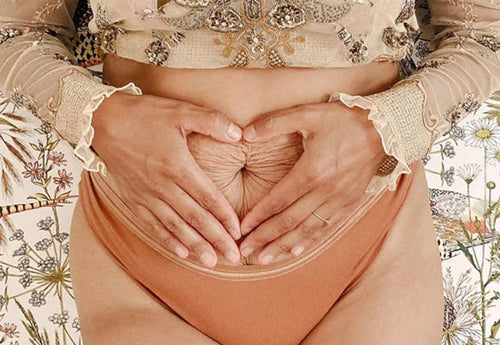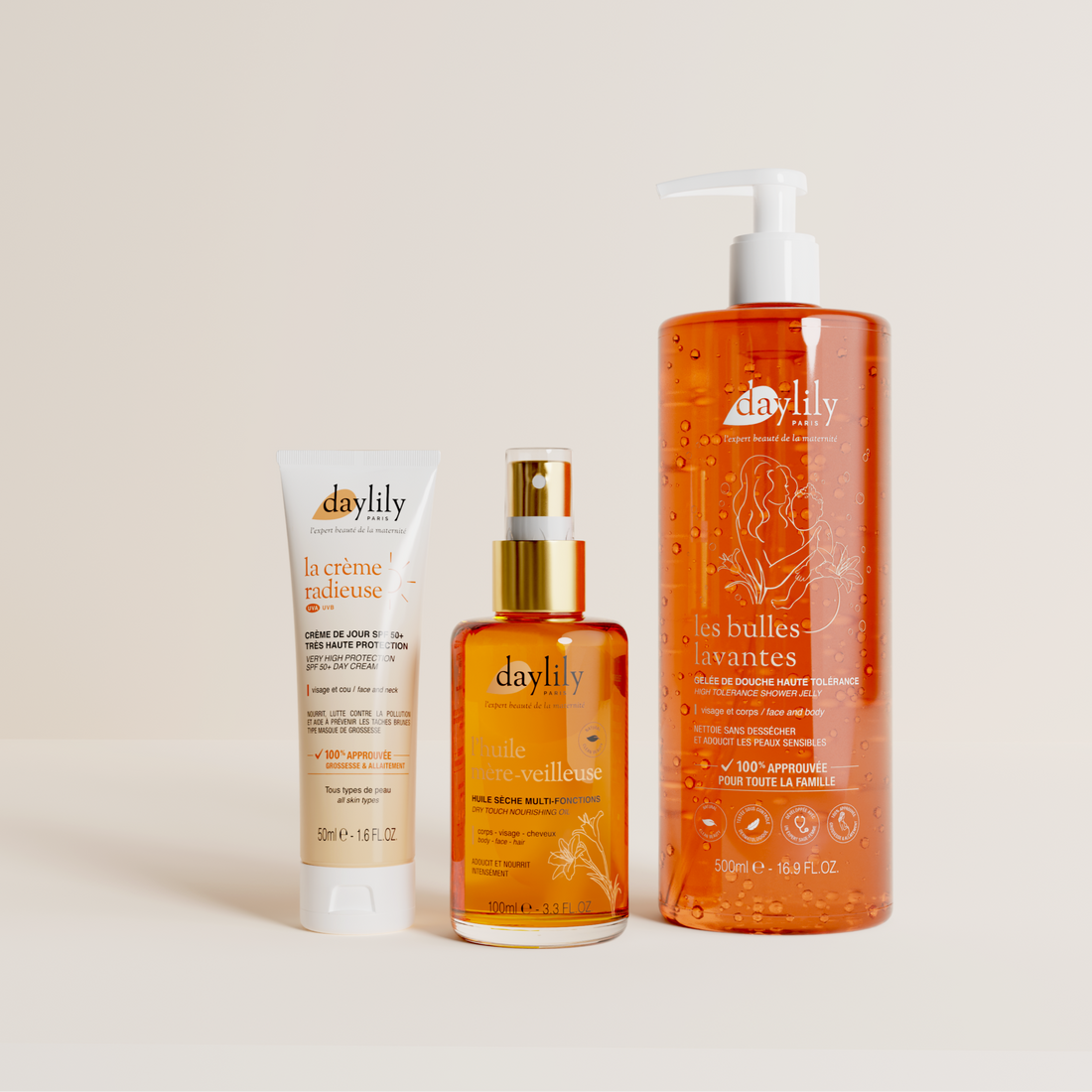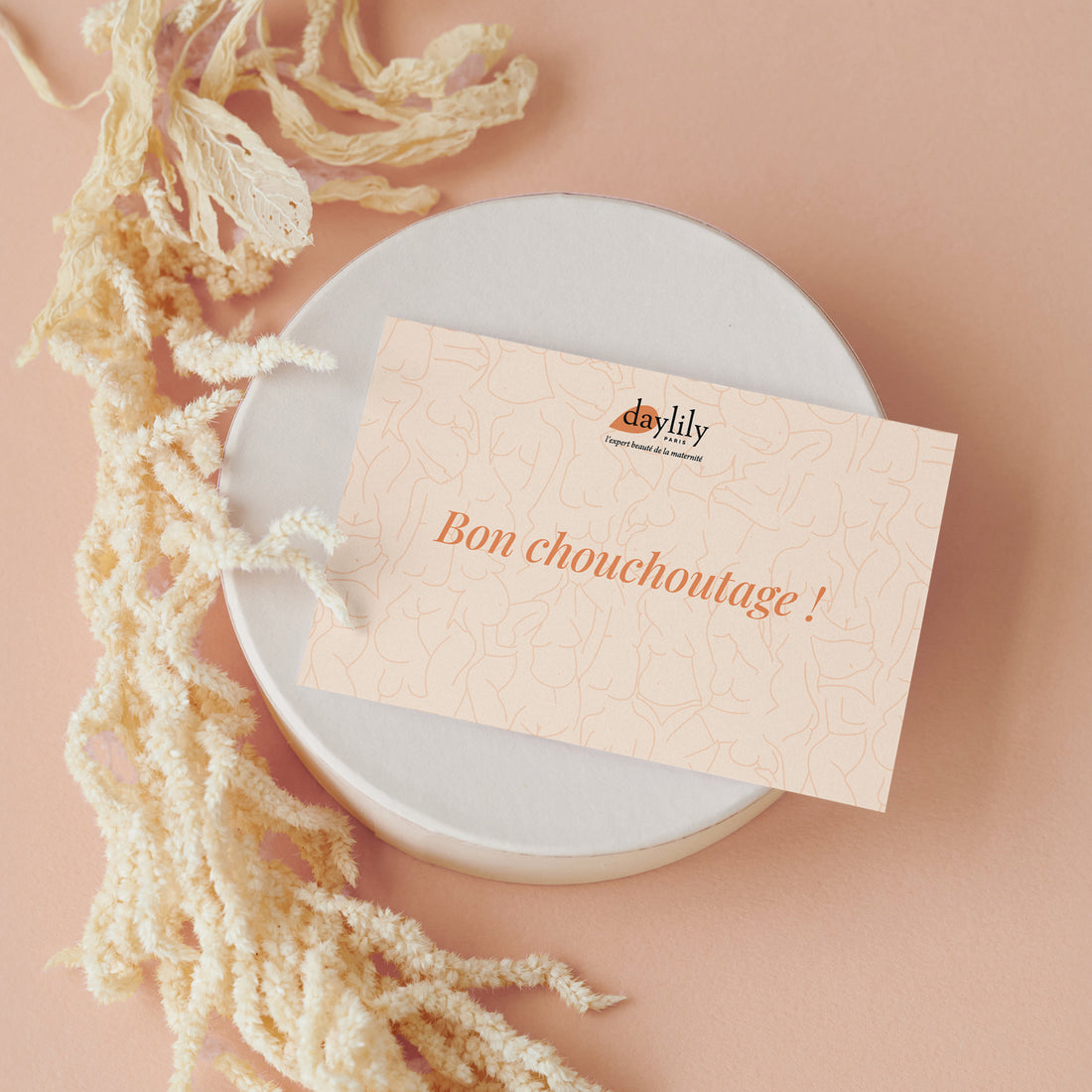Daylily Paris is a brand of clean, sensory and effective skincare products, made in France and 100% compatible with pregnancy and breastfeeding. We are also keen to share quality information for informed and uninhibited motherhood. 🧡
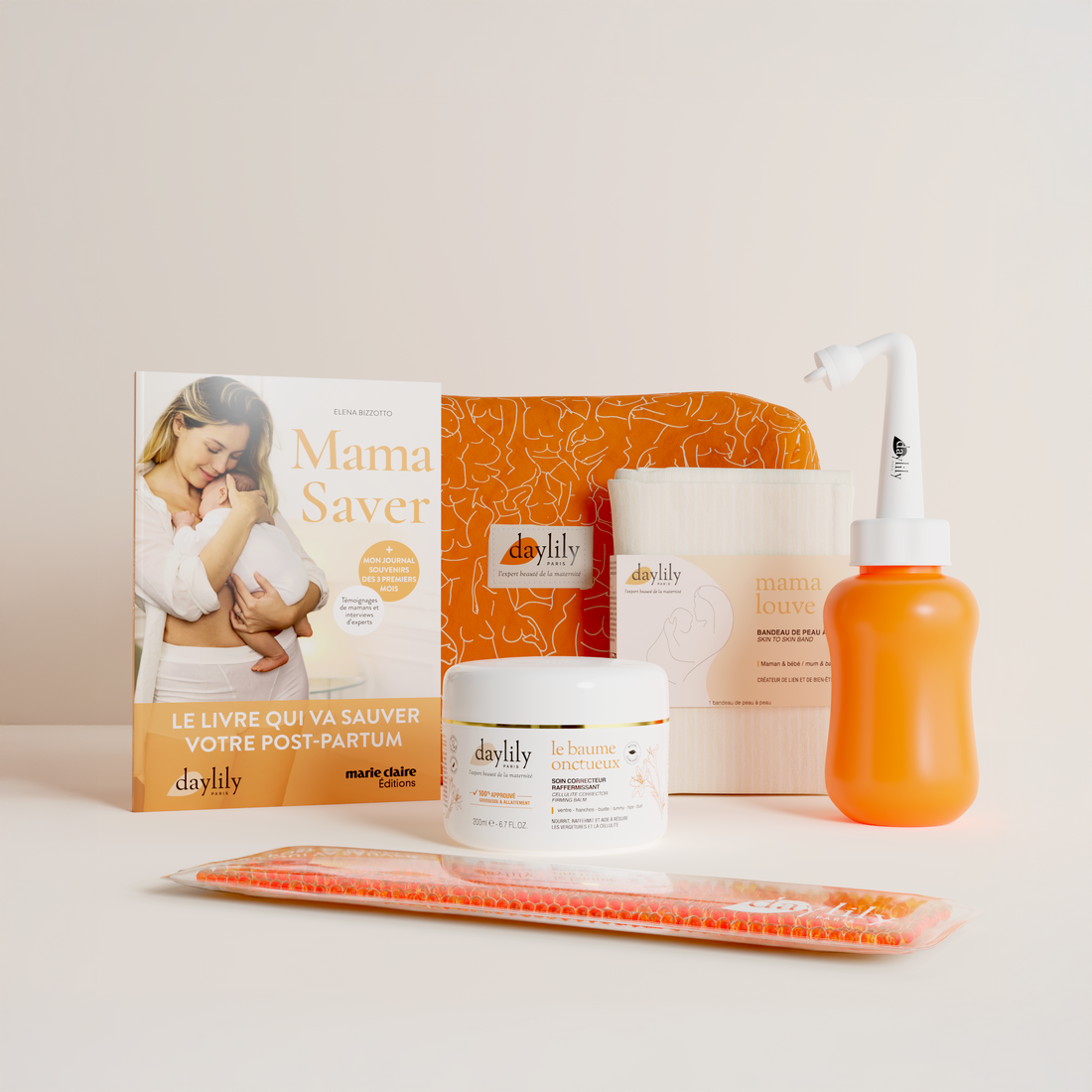
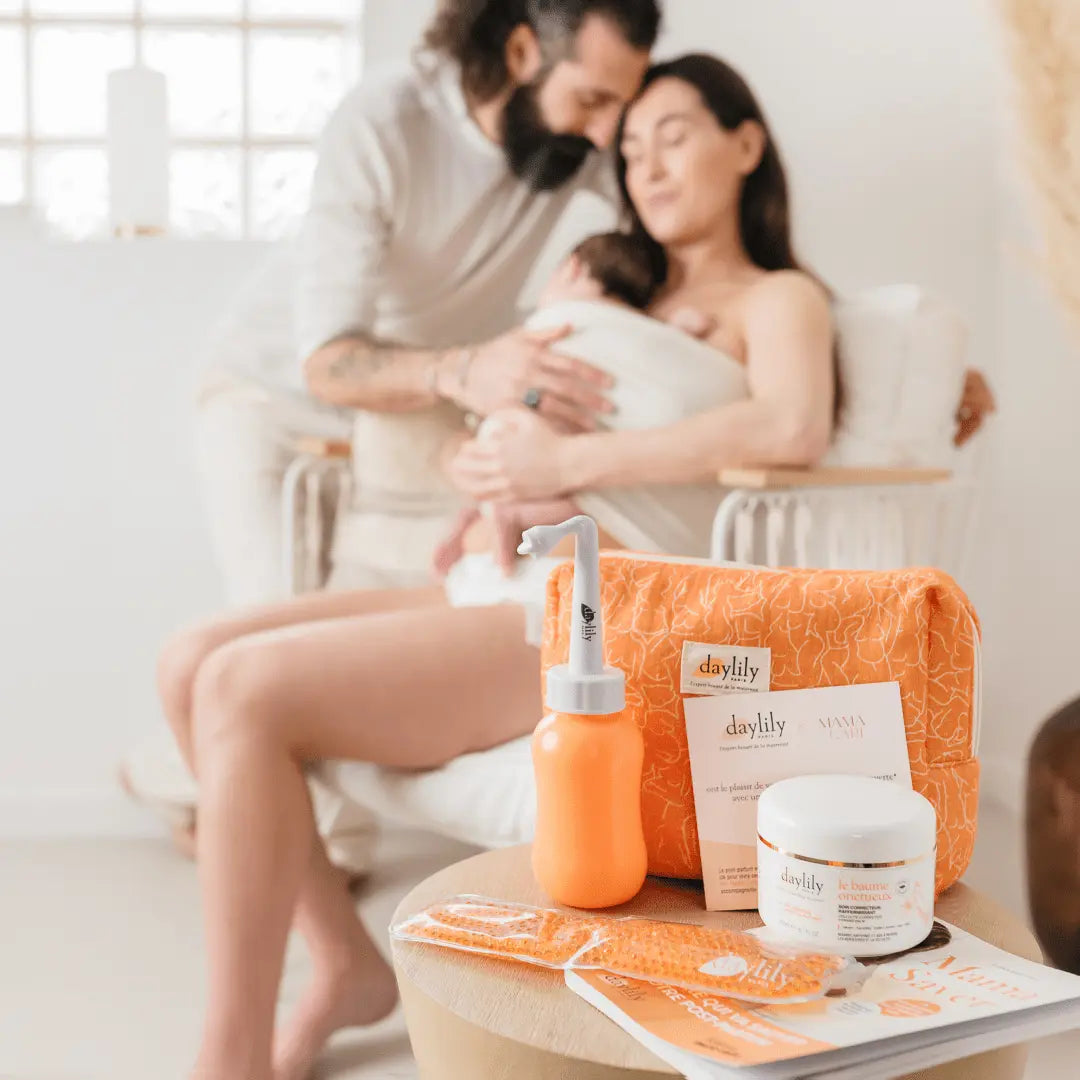
- Regular price
-
99,00 € - Regular price
-
165,80 € - Sale price
-
99,00 €

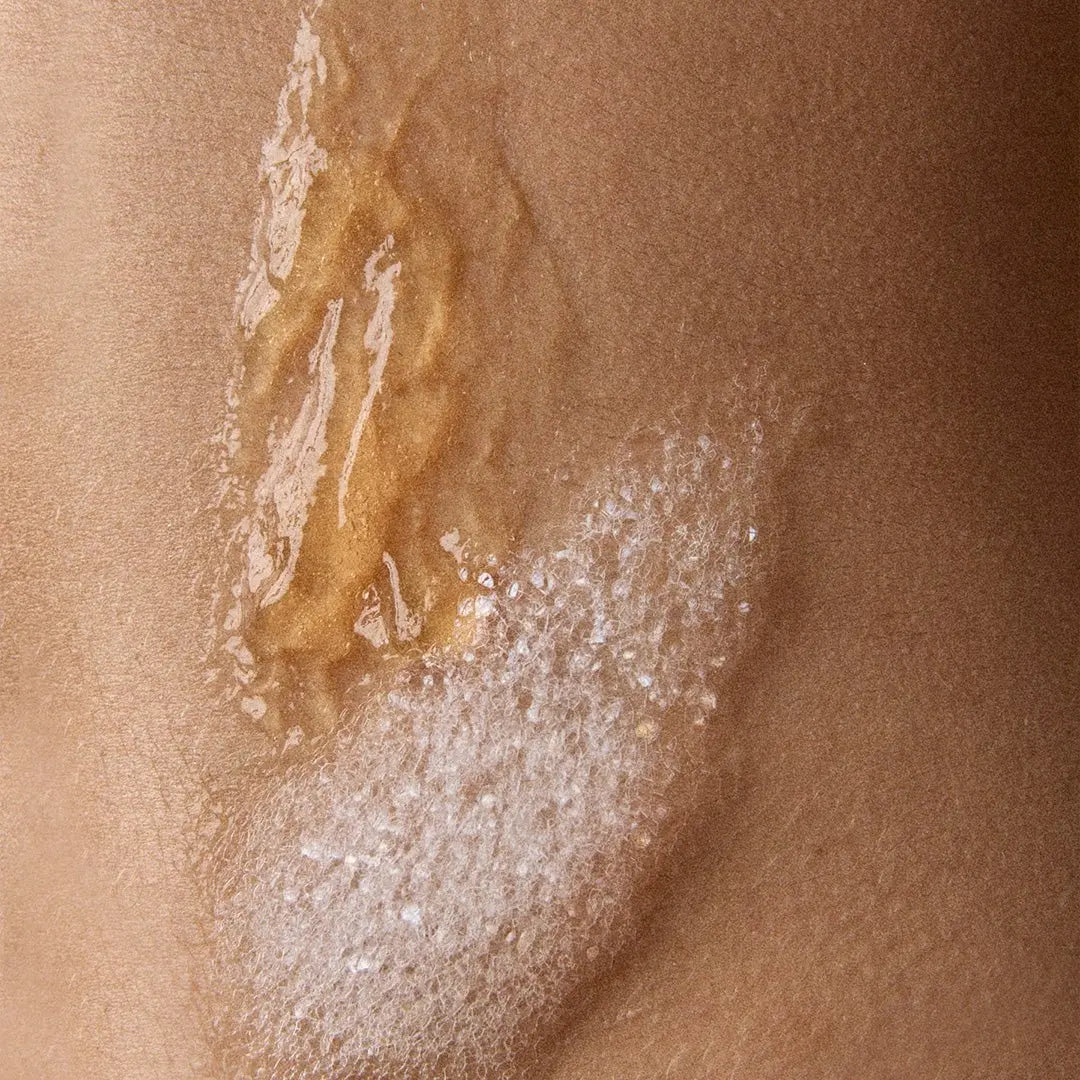
- Regular price
-
19,90 € - Regular price
-
- Sale price
-
19,90 €
- How to prepare for breastfeeding?
- In which cases should you see a lactation consultant before starting breastfeeding?
- In the event of a cesarean section, is the initiation of lactation more complicated?
- What is the best position to start breastfeeding?
- What to do if breastfeeding is painful?
- What do you think of silicone breast pads?
- What to do if milk production is not sufficient?
- What to do if the nipple is damaged?
- How do you know if breastfeeding is going well?
How to prepare for breastfeeding?
Firstly, there are preparation courses provided by Health Insurance on child nutrition. Ideally, this preparation could be scheduled before the 36th SA. After that, expectant mothers produce a lot of oxytocin, also called the love hormone, which focuses them on the upcoming arrival of their baby. This increased hormonal production is often accompanied by moments of absence. If the preparation takes place before the 36th week, the mother-to-be has a better chance of remembering the fundamentals.
It is also good to try to have benchmarks, namely what can be defined as well-established breastfeeding and to identify referents, that is to say relatives who have already breastfed and on whom it will be possible to rely on if necessary, as well as competent professionals .
Some people say that you have to prepare your nipples beforehand, this is not true. On the other hand, if there is a risk of more complicated implementation of breastfeeding, or the mother has had a difficult first experience, it is possible to collect a little colostrum at the end of pregnancy and freeze it. She can give it to her baby at birth if it proves necessary. These are scenarios that can be discussed with an IBCLC lactation consultant before delivery.
Finally, it is interesting to define your birth plan, including a section on breastfeeding. To do this, I often advise future mothers to use the website of the association for obstetric well-being, created by a group of health professionals.
In which cases should you see a lactation consultant before starting breastfeeding?
This is especially relevant when there is a greater risk that breastfeeding will go wrong. This is particularly the case if the mother-to-be is experiencing a multiple pregnancy, has had breast surgery, is diabetic or if her breasts have not changed in volume during pregnancy.

In the event of a cesarean section, is the initiation of lactation more complicated?
This is a false belief. It is not the cesarean section that delays the start of lactation, but rather the forgetting of the start of breastfeeding, which must be done within the hour following birth. In case of difficulty, there are solutions, such as using a small spoon to collect a few drops of colostrum. In this scenario, lactation has every chance of starting optimally.
What is the best position to start breastfeeding?
I think we shouldn't tell a mother what she should do and how she should settle down. It is best to follow a more intuitive approach. When a mother is invited to sit comfortably to breastfeed after giving birth, she often leans back and takes her baby to the breast. Her baby then finds himself curled up against her body. It doesn't matter whether she puts her baby in a transverse position, obliquely or even a little vertically, from the moment she is tilted back it happens by itself and she has no pain.
A suitable breastfeeding position is one in which the mother is comfortably seated, can see her baby without making any effort and guide him towards the breast.
What to do if breastfeeding is painful?
You must start by trying to identify the pain : is it localized at the nipple or the breast? Does it take place beforehand, at the beginning, after feeding? Is she so lively that she can't sleep? Are the nipples damaged? Are the breasts engorged?
All these points must be defined to find a solution. Very often, difficulties are resolved by respecting physiology, with early, frequent and effective feedings. To do this, you must sit comfortably, which allows the baby to enter the breast and not just take the tip of the nipple. You shouldn't limit your baby's milk supply either. The more he sucks, the better he sucks and the less painful it is. With this good and frequent latch, the baby guarantees his mother to have supple breasts.
Pain should never be trivialized. Increased sensitivity can be tolerated for the first few days, but you should not experience excruciating pain. There are many scenarios that can lead a newborn to injure his mother while breastfeeding, for example if he has experienced long and frequent contractions and the repeated pressure at the base of his occiput has generated cranial tension preventing him from opening his mouth wide, or if he was born with torticollis. It is then interesting to see an osteopath. There are also exceptional situations in which we will need to intervene on the baby, particularly in cases of ankyloglossia, although this is less common. Pain, we agree, can make you dread breastfeeding. However, a vicious circle then risks setting in: if we dread breastfeeding, we tend to space out feedings and the chest is even more swollen and painful, which makes latching on even more difficult.
What do you think of silicone breast pads?
In IBCLC lactation consultant jargon, we call them “silicone shields” because they create a boundary between mother and baby. Studies show that these screens do not necessarily reduce pain. The best thing is to identify the causes of the pain and correct them.
For some mothers, they still make breastfeeding less dreadful. However, the baby will take less milk. In this case, it is recommended to use a breast pump in parallel three or four times a day during the first month of starting breastfeeding.
What to do if milk production is not sufficient?
You have to have an open bar. We increase the number of cuddles and ensure that the baby has access to the breast as often as possible. We do many feedings, that is to say 12, 14 or even 18 times per 24 hours. You also need to be attentive to what happens during feeding. Just because the baby is at the breast and suckling does not mean he is actually swallowing. If no swallowing is heard, the mother can open her hand to form a large C and grab her breast to compress the mammary gland and send more milk into her baby's mouth.
You can also change breasts during feeding and possibly express additional milk to supplement baby during the next feeding.
What to do if the nipple is damaged?
When the skin is cracked, we want to protect the lesions from humidity and thus prevent them from lasting. We then feed the nipples with a fatty substance. Colostrum and contain it, but you can also apply coconut oil, olive oil or lanolin.
If the lesions are itchy or even rather deep, you can apply sterilized honey found in pharmacies, or other ointments.
How do you know if breastfeeding is going well?
We see it at the layer level. Once lactation is well established, around D15, the baby should have 6 heavy layers of urine per 24 hours and 3 yellow and abundant stools.
To go further, you can turn to Carole Hervé's programs or make an appointment with her or with another certified IBCLC lactation consultant.



